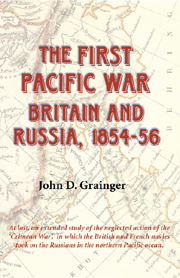Book contents
3 - Japan, China, the Amur River
Published online by Cambridge University Press: 12 September 2012
Summary
Commodore Matthew Perry's voyage to Japan had been well publicised, deliberately so. This gave time for the Japanese to be informed, by way of the Dutch factory at Nagasaki, so that the government in Edo might prepare itself. At the same time it also alerted European states to the prospect of the United States gaining a particular advantage in Japan. This had not happened in China, where the opening brought about by the British victory in the war of 1839–1842 had been rapidly followed by the extension of the same privileges to several other Western states. But Japan was known to have an effective government in full control of its territory, so that an agreement with one foreign power might well lead to the exclusion of all the rest. The best way to ensure that the United States did not monopolise Japanese attention was therefore for other powers to go there as well.
The British certainly intended to do so, and had been discussing a visit for several years, but their forces in Chinese waters – and it had to be an armed visitation – were fully occupied, not merely with the Chinese pirates and the Burmese war, but with the rapid changes in command which the China Station underwent – from Collier to Austin to Pellew to Stirling in three years. France had naval forces in the East which could be sent to Japan.
- Type
- Chapter
- Information
- The First Pacific WarBritain and Russia, 1854–56, pp. 50 - 69Publisher: Boydell & BrewerPrint publication year: 2008



